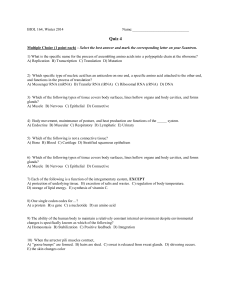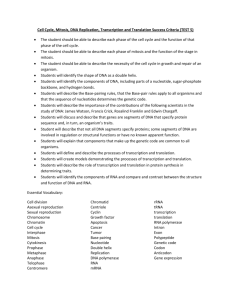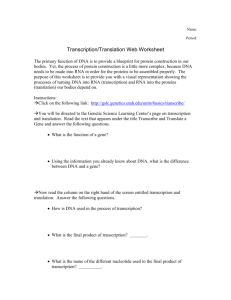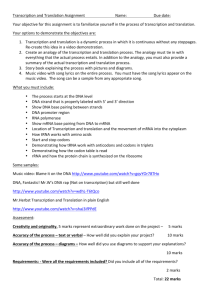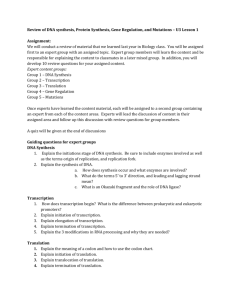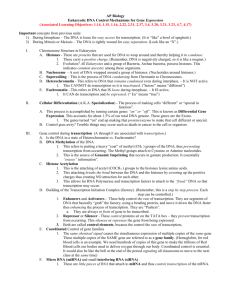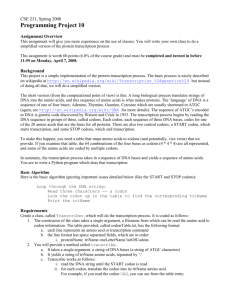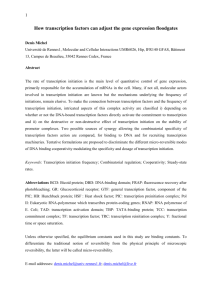Transcription and translation
advertisement
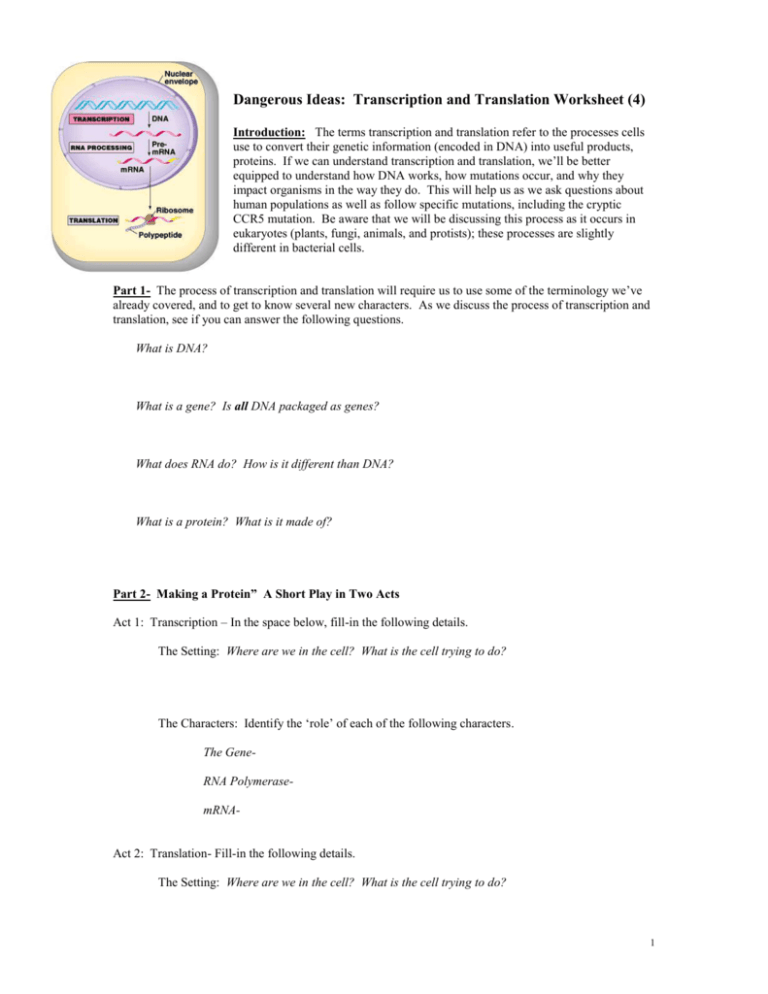
Dangerous Ideas: Transcription and Translation Worksheet (4) Introduction: The terms transcription and translation refer to the processes cells use to convert their genetic information (encoded in DNA) into useful products, proteins. If we can understand transcription and translation, we’ll be better equipped to understand how DNA works, how mutations occur, and why they impact organisms in the way they do. This will help us as we ask questions about human populations as well as follow specific mutations, including the cryptic CCR5 mutation. Be aware that we will be discussing this process as it occurs in eukaryotes (plants, fungi, animals, and protists); these processes are slightly different in bacterial cells. Part 1- The process of transcription and translation will require us to use some of the terminology we’ve already covered, and to get to know several new characters. As we discuss the process of transcription and translation, see if you can answer the following questions. What is DNA? What is a gene? Is all DNA packaged as genes? What does RNA do? How is it different than DNA? What is a protein? What is it made of? Part 2- Making a Protein” A Short Play in Two Acts Act 1: Transcription – In the space below, fill-in the following details. The Setting: Where are we in the cell? What is the cell trying to do? The Characters: Identify the ‘role’ of each of the following characters. The GeneRNA PolymerasemRNA- Act 2: Translation- Fill-in the following details. The Setting: Where are we in the cell? What is the cell trying to do? 1 The Characters: Identify the ‘role’ of each of the following characters. mRNAcodonstRNA’sRibosomesProteins- Part 3: Practicing Transcription and Translation. Work with a group to transcribe and translate the following DNA sequences and answer the following questions. 1. Consider the codon UCU. Which amino acid would this codon specify? 2. Now consider a mutation that changes this particular codon from UCU to UCC. Would the protein be affected? Why or why not? 3. Consider a short gene whose DNA sequence reads: TAC GTG ACG CGT ATT. What will the sequence of the mRNA be? What will the sequence of the protein be? What is the function of the last codon in this gene? Explain what you think will happen to this protein if one base is lost from this gene such that the DNA sequence now reads: TAC –TG ACG CGT ATT What do you think will happen to the protein if a mutation substitutes one letter (base) in the DNA sequence for another such that the DNA now reads: TAC CTC ACT CGT ATT 2

